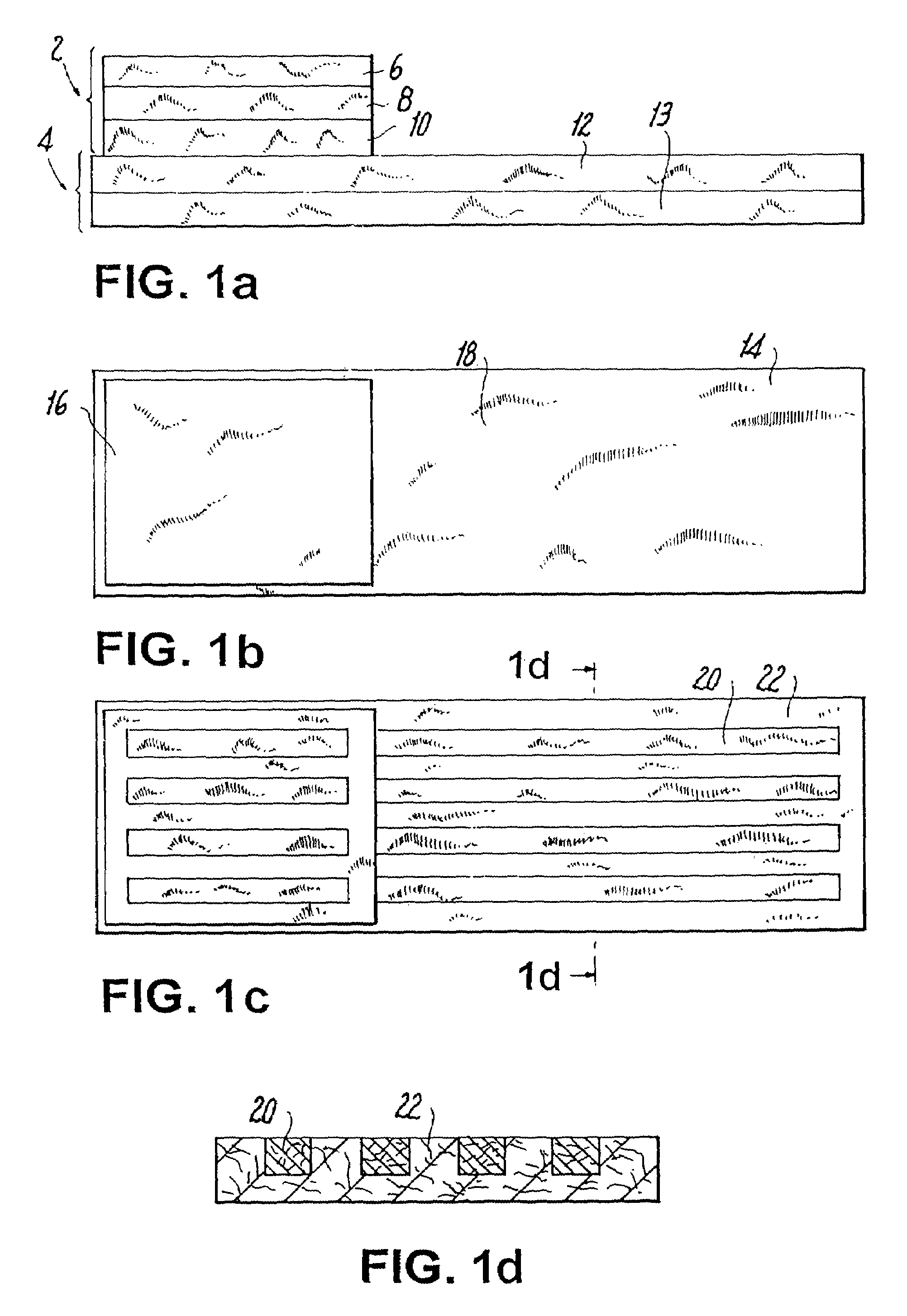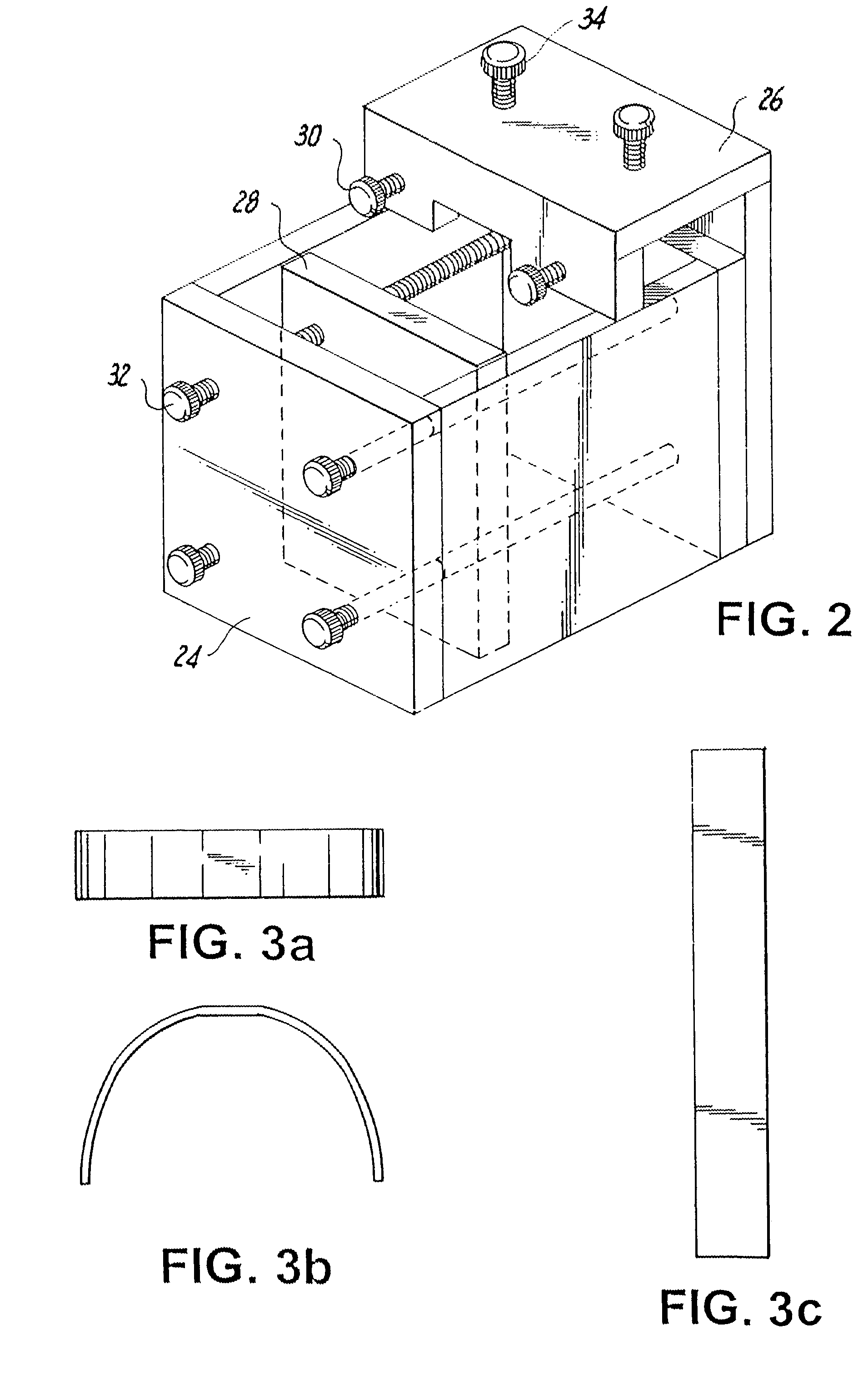High-performance absorbent structure
a high-performance, absorbent core technology, applied in the field of absorbent cores, can solve the problems of cellulose material being generally not available in preformed sheets, affecting the effect of cellulose material availability, and small effective pore siz
- Summary
- Abstract
- Description
- Claims
- Application Information
AI Technical Summary
Benefits of technology
Problems solved by technology
Method used
Image
Examples
example 1
[0080]An absorbent structure was assembled by joining together upper ply (component A1) and lower ply (component B1) described below. Both absorbent components were made by dry forming (or airlaying) on an M&J pilot machine. The mechanical and absorbency properties of the structure are depicted in Tables 1, 3 and 4. The structure exhibited improved performance compared to the performance found with commercial structures as described herein, due to the combination of profiled absorbency and appropriate levels of conformability and integrity.
[0081]Component A1. Two forming heads were used and they were fed with the same composition and amount of raw materials. The product was laid on a carrier of 40 gsm Brand 6810 polyester (polyethylene terephthalate) nonwoven (PGI). This material constituted the top stratum of the upper ply. The basis weights and compositions of the middle stratum and of the bottom stratum were the same, the basis weight being 160 gsm and the composition being 56.3%...
example 2
[0084]An absorbent structure was assembled by joining together Components A2 and B2 described below. Both absorbent components were made by dry forming on an M&J pilot machine. In the resultant structure component A2 is the upper ply and component B2 is the lower ply. The mechanical and absorbency properties of the structure are depicted in Tables 1, 3 and 4. The structure exhibited improved performance due to the combination of profiled absorbency and appropriate levels of conformability and integrity.
[0085]Component A2. The middle stratum of the Upper Ply was formed by feeding the first forming head with HPF fluff (Buckeye Technologies, Memphis, Tenn.) at 40 gsm and 2.8 dpf T-255 binder fiber (Kosa, Salisbury, N.C.) at 2.5 gsm. The second head was used to form the top stratum of the upper ply. The second forming head was fed with HPF fluff (Buckeye Technologies, Memphis, Tenn.) at 100 gsm, Z1049 SAP (Stockhausen, Greensboro, N.C.) at 94 gsm, and 2.8 dpf T-255 binder fiber (Kosa, S...
example 3
[0087]An absorbent structure was assembled by joining together Components A3 and B3 described below. Both absorbent components were made by dry forming on a DanWeb pilot machine. In the resultant structure Component A3 is the upper ply and Component B3 is the lower ply. The mechanical and absorbency properties of the structure are depicted in Tables 1, 3 and 4. The structure exhibited improved performance due to the combination of profiled absorbency and appropriate levels of conformability and integrity.
[0088]Component A3. The first forming head was fed with Foley Fluff (Buckeye Technologies, Memphis, Tenn.) at 60 gsm and 2.8 dpf T-255 binder fiber (Kosa, Salisbury, N.C.) at 10 gsm, to form the bottom stratum of the upper ply. The second head was used to form the middle stratum of the upper ply. The second head was fed with Foley Fluff at 98 gsm, SXM70 SAP (Stockhausen, Greensboro, N.C.) at 62.5 gsm, and 2.8 dpf T-225 binder fiber (Kosa, Salisbury, N.C.) at 19.5 gsm. The third head...
PUM
| Property | Measurement | Unit |
|---|---|---|
| length | aaaaa | aaaaa |
| density | aaaaa | aaaaa |
| length | aaaaa | aaaaa |
Abstract
Description
Claims
Application Information
 Login to View More
Login to View More - R&D
- Intellectual Property
- Life Sciences
- Materials
- Tech Scout
- Unparalleled Data Quality
- Higher Quality Content
- 60% Fewer Hallucinations
Browse by: Latest US Patents, China's latest patents, Technical Efficacy Thesaurus, Application Domain, Technology Topic, Popular Technical Reports.
© 2025 PatSnap. All rights reserved.Legal|Privacy policy|Modern Slavery Act Transparency Statement|Sitemap|About US| Contact US: help@patsnap.com



